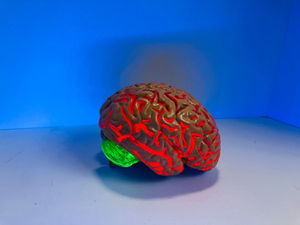The recent earthquake in the Alzheimer’s drug field is causing the usual periodicreview and reaffirmation of our general process of drug discovery and development. The controversy falls under the umbrella of target validation, as opposed to hit discovery, hit-to-lead-optimization, lead optimization, preclinical testing or clinical proof-of-concept. Of course, this is the one area still ruled by biology, with chemistry and data science still waiting at the gates.

On the minus side, the controversy seems to have originated in the usual biases that hold back therapeutic advances in the most intractable areas. Ultimately, many of these costly scientific and medical dead ends originate in our human bias towards what we SEE or SAW at the very beginning of the process. In this case, the namesake amyloid plaque of Alzheimer’s disease was observed under the microscope, and dogged commitment to that observation appears to have led scientists down an amyloid centric pathway to the point of the tail wagging the dog. Wait, plaques can be prevalent in people without Alzheimer’s symptoms? Well then it must be only certain proteins making up the plaque! Wait, nothing from the plaque can cause Alzheimer’s symptoms in animal models? Well then it must be some obscure pre-fragment from the plaque instead that does it? Wait, that obscure pre-fragment was fraudulently presented? Well it must be a different pre-fragment. And so on, never examining the root of the reasoning, that maybe the Abeta protein itself is a red herring?
The examples are numerous: Oh look, cancer cells grow rapidly under the microscope and viral oncogenes can transform quiescent cells! Wait, growth targeted drugs don’t even touch metastatic cancers?. . . And then it turns out that revving up the immune system AROUND the cancer was the breakthrough, not targeting the cancer itself. And so on. Basically, you can look at any intractable medical problem that has been worked on fruitlessly for over 20 years (HIV vaccine, Alzheimer’s, metastatic lung cancer, addiction, etc) and you will almost certainly find a bias towards a foundational visual observation of cells or molecules.
Observations are obviously good, but let’s widen our view. Almost every one of these red herrings are molecular or cellular observations, because those are the easiest to demonstrate in the lab. We’ve always known observation we make about the whole body (e.g. strength, speed, etc) and specific organs (e.g. heart rate) are most important to health and disease, but we seem to have some kind of learned helplessness about these kinds of phenotypes. Perhaps looking at how one organ is different from others is the way through these biases. GeneCentrix' tissue-specificity platform, historeceptomics.com, analyzes cells and tissues via their uniqueness in the body as found in their living molecular signatures from Omics technologies. Maybe the disease-modifying drug target in Alzheimer’s can be found in the Omics signature of the neuron, glial cell, endothelial cell, etc., SURROUNDING the plaque, not in the plaque itself, and maybe only in a specific location in the brain (e.g. the hippocampus). We are fighting this good fight.






